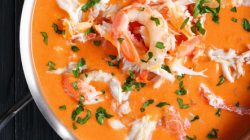Pet Food Trends: People Food Standards for Pets
They say, “what’s good for the goose is good for the gander” and that thinking certainly has begun to apply to the 68% of American households who are pet owners many of whom feed their pets diets similar to theirs.1 This wasn’t always the thinking but has certainly evolved as our furry friends are a part of the family more than ever. Successful stores like Bentley’s Pet Stuff, online sites like Chewy, and specialty stores like LA’s Muttroplis show that consumers are passionate about their pets and what they give to them, especially their food. The following pet food trends should look familiar as they are similar to those of people food.
Raw Food
Going raw has been praised as the way to feed pets for an improved life span; however, researchers in The Netherlands challenged claims of health benefits upon discovering that a raw pet food diet has the risk of exposing a pet to bacteria (some antibiotic resistant) or parasites. Recent raw food recalls due to the presence of bacteria like salmonella or listeria m. causes concern. However, brands like Minneapolis-based Sojos are winning with a twist on the raw concept. Sojos’s freeze-dried meat product is kibble-like, but magically changes upon the addition of water. Sojos is winning over pet lovers with flavors like beef, lamb, turkey, salmon, goat and even a fruit and veggie blend. Sojos even has a base product that allows pet lovers to add their own meat. The brand just launched a wild-caught line that includes salmon, venison and wild boar which pleases consumers who appreciate highly nutritional sources.
Home Delivery for Pet Food
The market for meal delivery is booming. Consumers love to have all the makings of dinner at their front door whether it’s from Blue Apron or one of the many other delivery services. And if they use it for themselves, why not for their pets? Blue Apron has invested in Ollie, a meal delivery service for pets that brings “human grade” US meats customized to a pet’s individual dietary and health needs. Other companies like The Farmer’s Dog and NomNomNow offer similar services with recipes like Heartland Beef Mash or Tasty Turkey Fare that promise to have pets anticipating mealtime. It’ll be interesting to see if the variety these services provide change the typical feeding routine for American pets.
Functional Ingredients
When it comes to being health conscious, today’s consumer is seeking more functionality in the foods they eat, even when it comes to their snacks. For their pets, the same standard applies. Seventy percent of US consumers depend on treats with functional ingredients for their pet’s health and well-being and 71% seek snacks that have the ability to help with health issues.2
As the snacking market continues to grow for American consumers, it’s bound to be just as high for their pets and if functional ingredients like probiotics can be incorporated all the better. Probiotics in pet treats are growing at a rate of 31.6% a year3. A human-like snack, PupCorn Plus is a riff on popcorn that comes in flavors like chicken and beef or cheddar and parmesan and has pre- and probiotics to aid in digestion.
Proteins, Plant-based and More
Proteins and plant-based are two trends that don’t just apply to people. Pets can benefit from a plant-based diet like peas and chickpea flour versus relying on grains similar to what’s happening in human food. Plant-based ingredients are filling but also can help if the pet shows any skin or dietary sensitivities. Varying proteins is another allergy-reduction strategy that pet owners are using as many believe that changing up the protein can prevent some skin conditions with dogs especially and expose pets to a variety of nutrients. Brands have responded creating protein-forward formulations with single-proteins, multiple proteins and even exotic proteins to reflect the origins of the pet’s natural habitat.
The Millennial Factor
There are more Millennial pet owners than Baby Boomer owners and as this very influential group moves into their big spending years, there will be an incredible shift in how products are purchased, delivered, and much more. As with human food, pet food ingredients will be influenced by Millennials because as a generation they value quality, seek sustainability and are health conscious. These same habits will affect how they treat their pets.
Consolidations
The pet food market is almost $30 billion and there has been quite a shift in the major players in 2018 alone. Since January of this year, General Mills purchased Blue Buffalo and Rachael Ray’s Nutrish brand was acquired by Smuckers adding to their portfolio of pet brands like Milk-Bone and Meow Mix. And how consumers purchase pet food is changing as well. Brick and mortars including superstores and warehouse locations are being replaced by Amazon and Chewy as price and time are values consumers won’t sacrifice.
Obviously, there’s more than a bowl-full of activity in the pet food market and we are here to help bring some drool-worthy flavor to your next pet product. Our real food ingredients are clean label and offer solutions to your formulation challenges.
Sources:
- http://americanpetproducts.org/Uploads/MemServices/GPE2017_NPOS_Seminar.pdf
- https://www.petfoodindustry.com/articles/6687-pet-treats-like-human-snacks-offer-health-and-pampering
- http://www.spins.com/wp-content/uploads/2018/01/TrendWatch-2018TrendPredictions.pdf



